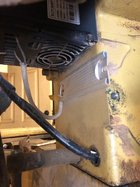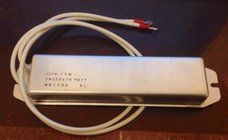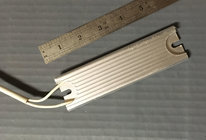Sorry to raise this dead horse for beating again.
We're nearly done replacing the VFD on one of our high school's Powermatic 3520B lathes, but there are no wires for a braking resistor. Do some of the Powermatics not require a braking resistor? If they all do, any suggestions on where to look for the wires? Nothing in the control bundle, nothing visible through the panels in the headstock, except the "pink" and red wires which connect to black and white wires presumably from the RPM display.
Thanks for the help.
We're nearly done replacing the VFD on one of our high school's Powermatic 3520B lathes, but there are no wires for a braking resistor. Do some of the Powermatics not require a braking resistor? If they all do, any suggestions on where to look for the wires? Nothing in the control bundle, nothing visible through the panels in the headstock, except the "pink" and red wires which connect to black and white wires presumably from the RPM display.
Thanks for the help.



